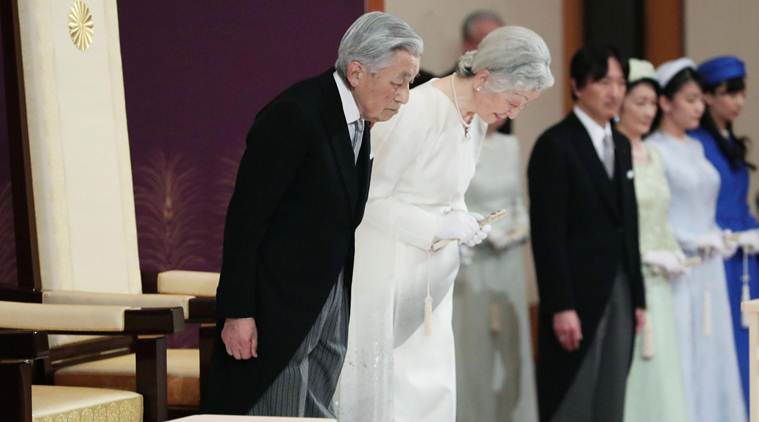
Explained: The Chrysanthemum Throne and Reiwa Era
The Japanese Emperor is revered in the Shinto religion, in which the royal family is believed to have divine descent. While the Chrysanthemum Throne refers to the monarchy itself, it is also the name of an actual octagonal throne that sits in the Tokyo Imperial Palace, which is used on special occasions. With the end of the reign of Akihito, the ‘Heisei’ era ended, and with the ascension of Naruhito to the Chrysanthemum Throne, the new ‘Reiwa’ era has begun in Japan. Also read | Origins, selection and meaning of Japan’s new imperial era name ReiwaEmperor Akihito’s gengo, Heisei, or ‘achieving peace’, followed the Showa era (1926-89), which translates as ‘enlightened harmony’. Showa was preceded by the Taisho era (1912-26), or ‘great righteousness’, and the Meiji era (1868-1912), which translates as ‘enlightened rule’.
Source: Indian Express April 30, 2019 22:18 UTC







